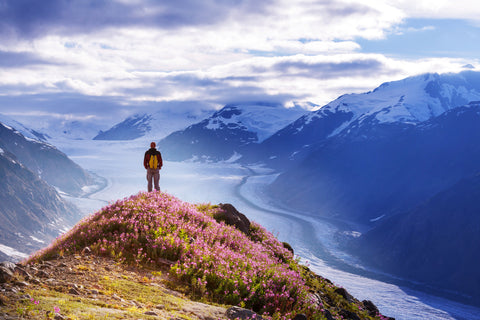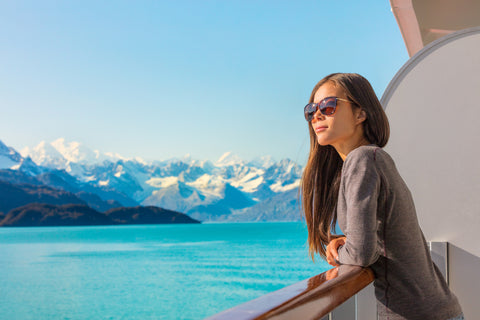What to Pack for an Alaskan Cruise
You’ve chosen a tour of the beautiful northern waters as your next destination, and have now turned your energy to the topic of what to pack for an Alaskan cruise. You will be entering a land and climate of extremes, including vast distances and endless vistas (on sunny days), and you’ll need to pack for this outing just as carefully as you would for safari, jungle or any other extreme environment.
Even though it’s a cruise, and the ship will keep you comfortable, remember to bring a few key items to adapt. Alaskan cruises typically begin in June and run through September, and some of these months include rainy and foggy days. Whether you're spending your time romping through Wrangell St. Elias or sightseeing in Glacier Bay, basic items on the list of what to pack for an Alaskan cruise include: insulation of all types, several pieces of rain gear, and sightseeing essentials.
Insulation

Alaska has warm days in summer, especially now that climate change continues—however, summer days can turn cold. When wondering if mittens are something you should pack for an Alaskan cruise, the answer is: maybe. If you run cold, you may want light gloves for nights. The sun lingers in the sky most of the night, but it is not full sun. Much of the night is permeated by a gradual twilight, so air temperatures can dip into the fifties and even forties on a regular basis.
We recommend a base layer, both upper and lower, for sitting on deck late into the night and enjoying the extended dusk. A lightweight down or synthetic jacket that takes up little suitcase space is a good idea if you plan to sit under the stars.
The easiest way to insulate is by bringing a base layer and warm cap; in most cases, this is enough and heavy jacket can be skipped because you will need to bring a rain jacket. With base layer, shirt, cap and rain jacket, you will stay comfortable during the evening hours.
Raingear
Alaska annual rainfall varies widely, from 10 inches a year in the Seward peninsula to over 100 inches a year. Much of the interior and the Aleutian islands gets soaked, and storms along cruise ships routes are likely. Bring an insulated rain jacket with hood, at the very least. We recommend the style that can fold up inside itself for easy carrying. The Free Rein is an excellent choice if you're looking for functionality that'll hold up no matter where you are. If you're looking for something lightweight, the Thunderlight jacket is a premium choice, as it weighs less than a pound and is packable into the wearer's left pocket.
Additional rain gear is a good idea on any what to pack list, and this includes rain pants, especially if you are planning on kayak excursions. Hassle-free, dual zipper rain pants are inexpensive and have many uses, including hiking and bicycling.
At the very least, bring a cheap, all-purpose, hooded poncho so you can cover up in a sudden downpour. Alaskan cruises are beautiful not matter what the weather, but you are likely to run into rain and fog – and some cruise patrons spend the majority of their travel in mostly rainy conditions.
Sightseeing

Bring binoculars, sunglasses and sunscreen. Binoculars are a must because you are likely to see amazing wildlife on the shore from your cruise ship, including bears and whales. These are large animals, but when you are miles away they tend to shrink! In addition, majestic sea birds and a wide range of eagles create a beautiful sight against the backdrop of distant snowy peaks.
When the sun does make an appearance in Alaska, it is high in the sky by 5 am in midsummer. Long, sunny days make sunglasses highly recommended as you figure out what to pack for an Alaskan cruise, particularly since the reflection off the water intensified sunlight. You are likely to visit towering glaciers and in sunny conditions the snow is hard on the eyes.
Sunscreen is recommended here due to long hours of sunshine, but also because of foggy conditions. In light fog, UV rays intensify and it is easy to get a sunburn without seeing any sunlight.
Check online for more detailed recommendations, but do not leave rain gear, sun protection and binoculars behind!
